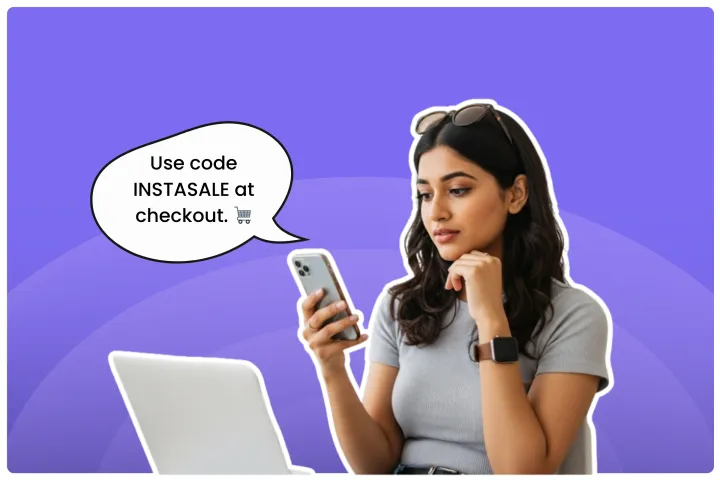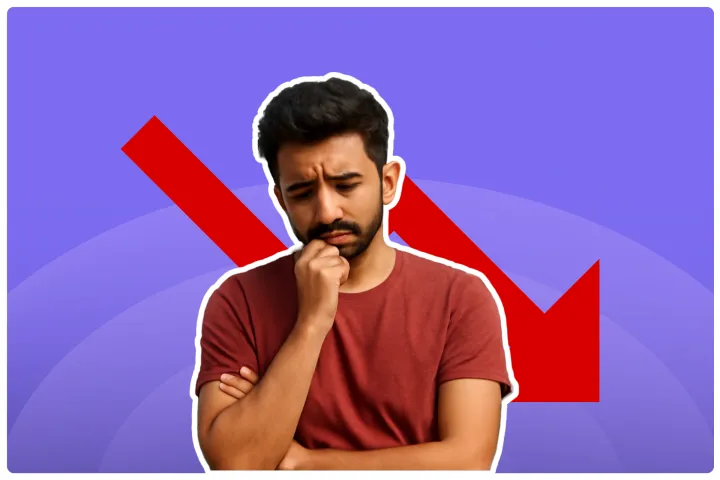Can We Hide Posts On Instagram From Certain Followers?
Want to keep certain followers from seeing your posts on Instagram? Learn the simple steps to control your audience and protect your privacy!
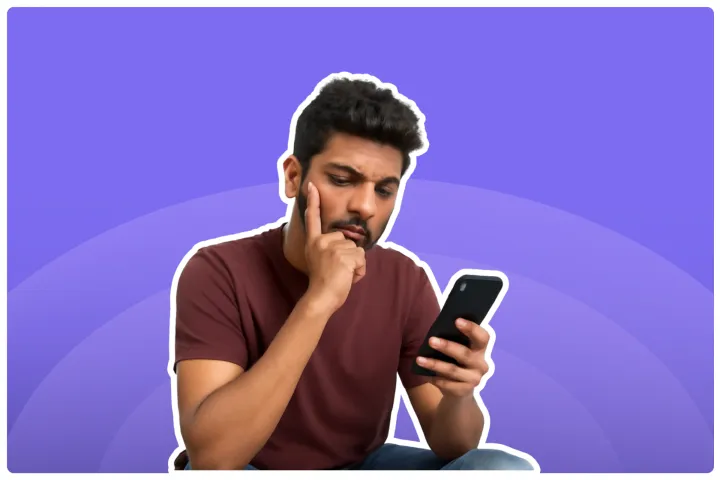
You want to share your work, connect with your community, but maybe not share everything with everyone, right? Totally get it. While Instagram doesn't have a magic button to hide specific feed posts from certain followers (wouldn't that be handy sometimes? 🤔), there are definitely smart ways to manage your visibility and keep your space feeling right for you.
This guide is your friendly manual for navigating Instagram's privacy options and figuring out the best strategies for you as an influencer. We'll break down the tools you have, how to use them effectively, and how to keep building your brand while maintaining your comfort levels. Think of this as your backstage pass to mastering your Instagram presence.
Can We Hide Posts On Instagram From Certain Followers?
First things first, let's get clear on what Instagram does offer and where the limitations are. Knowing the tools in your toolkit is the first step to using them wisely. Instagram gives you several controls, but they work in broader strokes rather than super specific post-by-post hiding from individual followers.
Instagram's Privacy Features Overview:
Here’s a quick rundown of the main privacy features you should know about:
1) Private Account Setting: This is the biggest privacy shield Instagram offers. When you switch your account to private, only people you approve can follow you and see your content – your feed posts, Stories, Reels, the whole shebang. New followers need your permission slip!
2) Close Friends List: This feature is specifically for Stories. You create a special list of followers (your "inner circle," if you will), and you can choose to share certain Stories only with them. They'll see a green ring around your profile picture instead of the usual pink/orange when you post a Close Friends Story. It’s like whispering a secret to your besties in a crowded room.
3) Restrict and Block Options: These are tools for managing specific individuals.
- Restrict: This is a softer approach than blocking. When you restrict someone, their comments on your posts will only be visible to them unless you approve the comment.
- Their direct messages will move to your Message Requests folder, and they won't see when you're online or if you've read their messages. It's a way to limit interaction without them necessarily knowing they've been restricted. Think of it as putting someone in a 'time out' corner digitally.
- Block: This is the firm boundary. Blocking someone prevents them from finding your profile, posts, or Stories. They cannot message you, follow you, or see your content at all. If you have previously approved comments from them, those comments will disappear. It's a complete cut-off.
Limitations: The Big "But..."
Now, for the crucial part many creators ask about:
No Hiding Individual Feed Posts from Specific Followers: As of right now (April 2025), Instagram does not have a feature that lets you publish a feed post and select specific followers who cannot see it, while allowing everyone else to view it. If your account is public, your feed posts are public.
If your account is private, your feed posts are visible to all your approved followers. You can't pick and choose visibility for individual feed posts among your existing followers.
Engagement Visibility: Even on a private account, all your approved followers can generally see who likes and comments on your posts. While the 'Restrict' feature limits comment visibility to others for the restricted person, general engagement metrics (like counts and the list of likers/commenters) are visible within your follower group.
Understanding these limitations is key. It means we need to get creative and use the available features strategically to achieve a similar effect of controlling who sees what, even if the ideal tool doesn't exist yet.
Let's explore how you can do that!
Strategies to Control Who Sees Your Instagram Posts
Alright, so the direct "hide post from this person" button isn't there. No worries! We have other levers to pull. These strategies involve using Instagram's existing features in smart ways to manage your audience and content visibility. Think of it as navigating the platform like a pro.
A) Making Your Account Private
This is the most comprehensive way to control who sees all your content moving forward. It puts a gate around your profile.
How-To:
- Open your Instagram app.
- Go to your Profile (tap your picture in the bottom right).
- Tap the three horizontal lines (hamburger menu) in the top right corner.
- Select Settings and privacy.
- Scroll down to the "Who can see your content" section and tap on Account privacy.
- Toggle the switch next to Private Account to the 'on' position (it usually turns blue).
- Instagram might ask you to confirm. Tap Switch to Private.
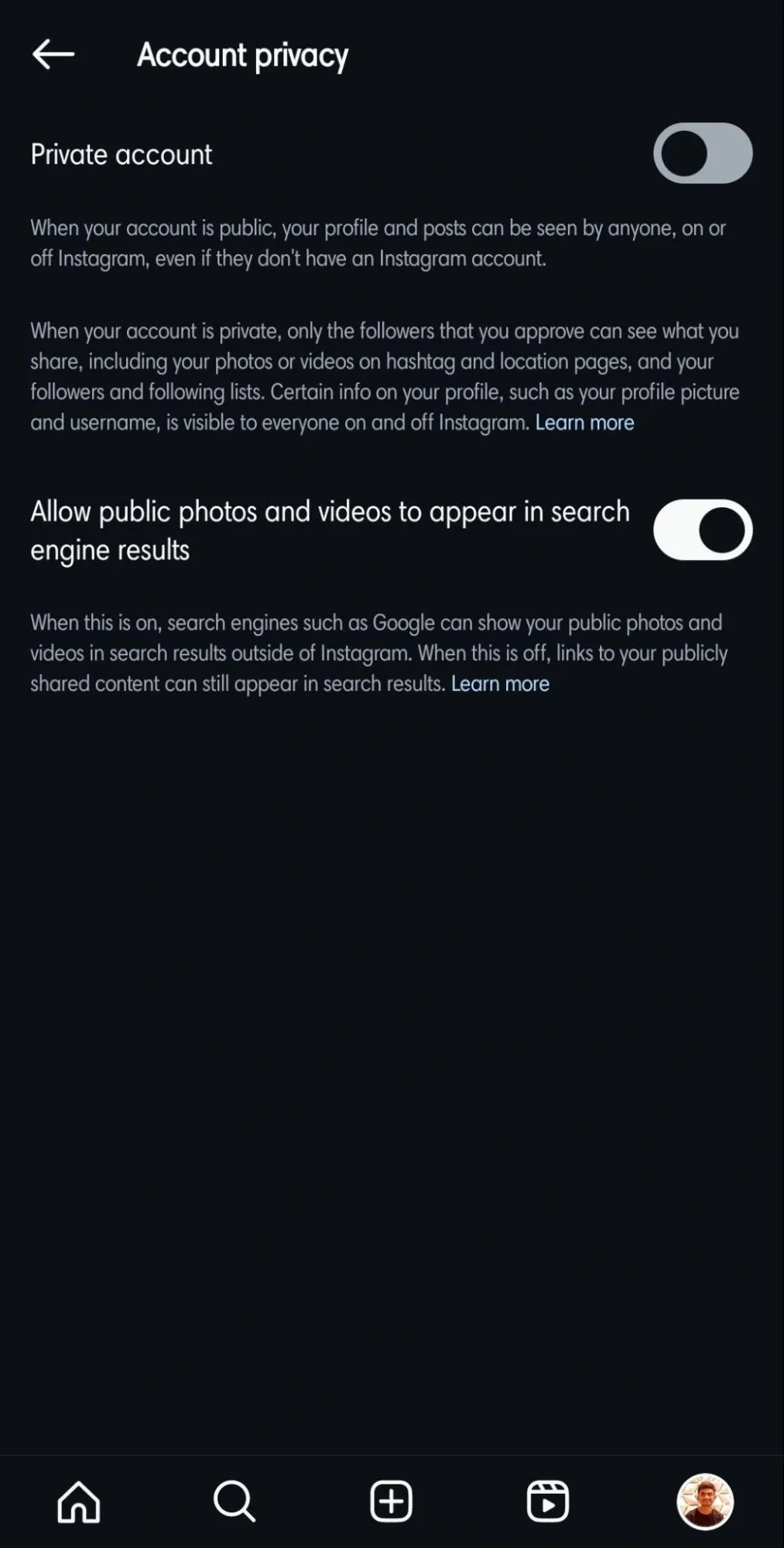
Implications:
- Control Over New Followers: Anyone who wants to follow you from this point on will need to send a request, which you must manually approve. You decide who gets in.
- Content Visibility: Only your approved followers can see your feed posts, Reels, Stories, follower list, and following list. Your content won't appear in public hashtag feeds or the Explore page for non-followers.
- Existing Followers: People who were already following you before you went private remain followers. They can still see your content. Going private doesn't automatically kick anyone out. If you want to remove existing followers, you'll need to do that separately (we'll cover this next!).
- Engagement: Only your followers can like, comment, or save your posts.
Considerations for Influencers:
- Reach & Visibility: This is the big one. A private account significantly limits your reach. Potential new followers, brands, and collaborators can't see your content easily. This can hinder organic growth and make it harder for brands to discover you for potential partnerships (imagine a brand wanting to see your feed aesthetic but hitting a "Request to Follow" button – it adds friction). A 2023 report by Statista noted the continued growth of the influencer market in India, projected to reach nearly ₹28 billion, highlighting the importance of visibility for securing collaborations. Going private can make tapping into this market more challenging.
- Brand Deals: Many brands prefer working with influencers who have public accounts for maximum campaign visibility. They want their sponsored content seen by as many people as possible. A private account might make you ineligible for certain campaigns or require extra explanation to potential partners.
- Follower Management: You'll need to actively manage follow requests. This can be time-consuming, especially if you get many requests. You'll need a system for vetting who you let in, aligning with your brand or personal boundaries.
- Niche Suitability: For some niches, particularly those dealing with very personal content, sensitive topics, or catering to a very specific, tight-knit community (like certain types of coaching or support groups), a private account might actually be beneficial. It can foster a sense of exclusivity and safety. For micro or nano-influencers focused on deep engagement rather than mass reach, it could be a viable strategy.
- When it Might Work: If your priority is absolute control over your audience and you're less focused on rapid growth or broad public visibility, or if your content is highly personal, going private is the strongest tool. But weigh the trade-offs carefully!
B) Removing Followers
Okay, so you went private, or maybe you're staying public but realize there are specific people on your follower list you'd rather not share your content with anymore. Removing a follower is a direct way to stop them from seeing your posts (if your account is private) or make it harder for them (if public, they'd have to manually check your profile).
How-To:
- Go to your Profile.
- Tap on your Followers count at the top of your profile.
- Scroll through the list or use the search bar to find the specific follower you want to remove.
- Next to their name, you'll see a Remove button. Tap it.
- Instagram will ask for confirmation. Tap Remove again.
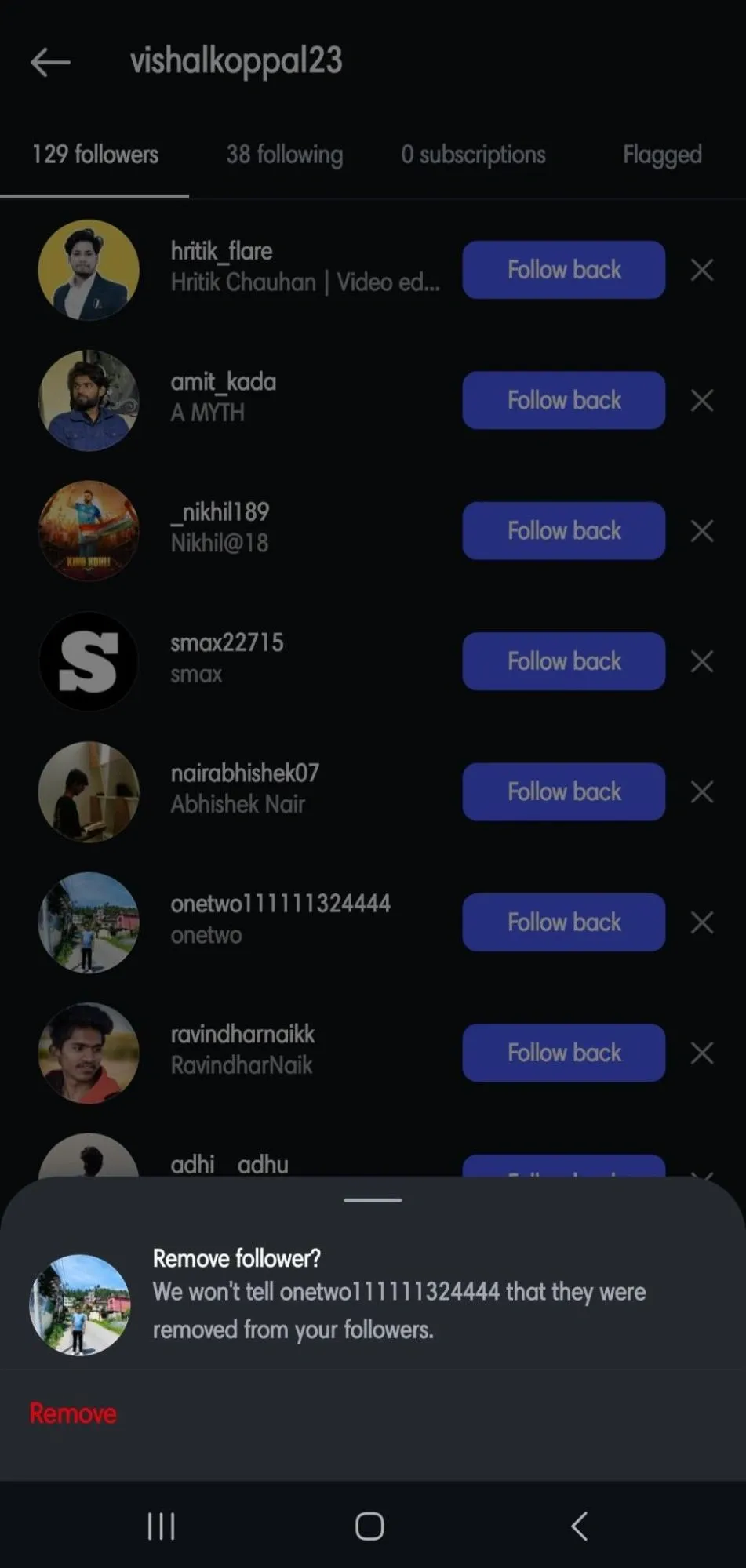
Implications:
- Visibility Change: If your account is private, the removed follower immediately loses access to all your content. They won't be able to see your posts, Stories, or Reels anymore. If your account is public, they can still technically navigate to your profile and see your posts, but your content will no longer appear in their feed automatically.
- No Notification: The best part? Instagram does not notify the person that you removed them. They won't get an alert saying "You've been removed by [Your Name]". They might eventually notice they aren't seeing your posts or realize they aren't following you if they visit your profile, but it's a quiet action.
- Re-Following: If your account is public, they can simply follow you again. If your account is private, they would need to send a follow request, which you can then ignore or deny.
Considerations for Influencers:
- Cleaning Your Audience: This is super useful for removing bot accounts, inactive users, or followers who consistently leave negative or inappropriate comments but haven't crossed the line into needing a full block. It helps maintain a healthier, more engaged community. A 2022 Nielsen report emphasized that audience engagement quality is increasingly important for brands evaluating influencers, making a clean follower list valuable.
- Maintaining Professional Boundaries: Sometimes you might have followers (perhaps industry peers, former colleagues, or acquaintances) you'd prefer not to share everything with, but blocking feels too aggressive or could cause awkwardness. Removing them (especially if your account is private) is a discreet way to create distance.
- Avoiding Drama: Because it's a silent action, removing a follower is less likely to provoke a reaction compared to blocking, which can sometimes lead to confrontation if the person finds out.
- Impact on Follower Count: Obviously, removing followers reduces your overall count. While engagement rate is more important than raw numbers, be mindful of this if you're close to a particular milestone or have specific targets for brand deals.
- When to Use It: Removing followers is great for curating your audience, dealing with low-level negativity discreetly, or limiting access for specific individuals when your account is private. It’s your digital Marie Kondo method for your follower list – keep only those who spark joy (or at least, don't cause trouble!). ✨
C) Using the Close Friends List for Stories
This feature is your best bet for sharing selectively without changing your main account privacy or removing followers. It's designed specifically for Stories, those ephemeral, 24-hour snippets of life.
How-To:
- Go to your Profile.
- Tap the three horizontal lines (hamburger menu) in the top right.
- Select Close Friends.
- You'll see a list of suggested people, or you can search for specific followers. Tap Add next to the names you want to include in your Close Friends list. There's no limit to how many people you can add (well, within reason!).
- You can review and edit this list anytime by returning to this menu. People are not notified when you add or remove them from your Close Friends list.
To Share a Story: Create your Story as usual (take a photo/video, add text, stickers, etc.). Before posting, instead of tapping "Your Story" (which everyone shares with everyone), tap the Close Friends button (usually a green circle with a white star) at the bottom.
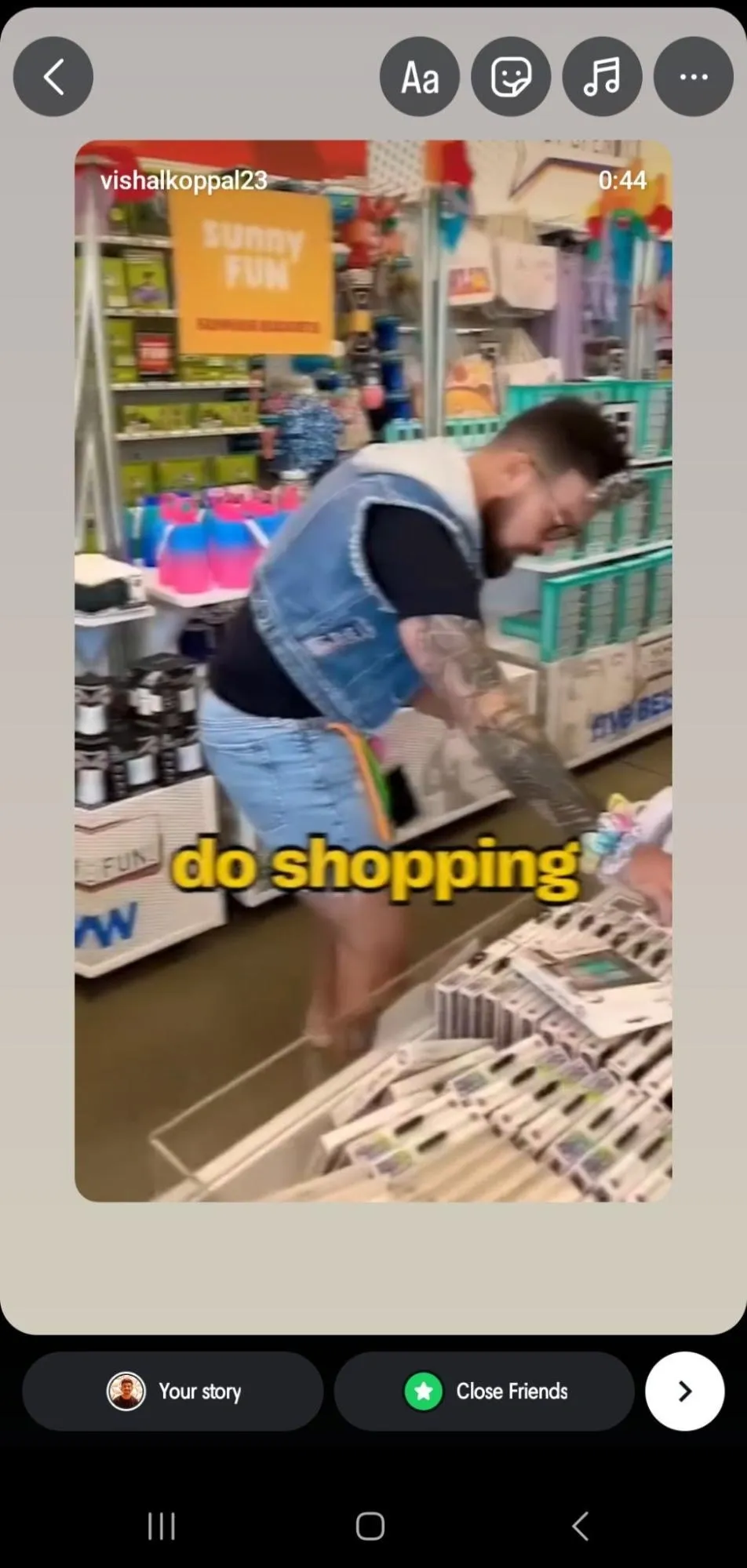
Implications:
- Selective Story Sharing: Only the people on your Close Friends list will see the Stories you share using this option. They'll know it's a Close Friends Story because your profile picture in the Stories tray will have a green ring around it instead of the usual pink/orange.
- Feed Posts Unaffected: This only applies to Stories. Your regular feed posts, Reels, and profile information remain visible according to your main account privacy setting (public or private).
- Enhanced Privacy for Personal Content: It allows you to share more personal updates, behind-the-scenes moments, vulnerabilities, or just silly stuff with a smaller, trusted group without broadcasting it to your entire audience.
Considerations for Influencers:
- Building Deeper Connections: This is GOLD for community building! Sharing exclusive content with Close Friends makes them feel special, like insiders. It fosters loyalty and stronger relationships. Think exclusive Q&As, unedited bloopers, asking for feedback on new ideas, or personal life updates you're not ready to share widely.
- Behind-the-Scenes (BTS) Access: Offer your Close Friends a raw, unfiltered look at your creative process, event prep, or daily life. This authenticity resonates deeply.
- Example: Travel influencer Riya uses her Close Friends list to share travel mishaps (like missed trains or bad hotel rooms) that don't make it to her polished feed. This approach makes her followers feel like they're experiencing the authentic journey with her, including the imperfections. This relatability helped her grow a hyper-engaged segment within her audience.
- Testing Ground: Use Close Friends to test new content formats, poll opinions on upcoming projects, or get feedback before a wider launch. It's like having a dedicated focus group.
- Exclusive Perks & Potential Monetization: Some influencers offer inclusion in their Close Friends list as a perk for channel members (on YouTube), Patreon supporters, or buyers of their products/courses. It can be a value-add or even a directly monetized benefit (though tread carefully with Instagram's terms). Imagine offering early access to a limited merch drop priced at ₹999 exclusively via Close Friends Stories.
- Managing the List: Keep your list updated. As your relationships evolve, you might add or remove people. Remember, they aren't notified, so manage it based on your comfort level.
- Why It's Awesome: Close Friends is perfect for sharing more intimately without locking down your entire profile. It allows you to nurture a core community while still maintaining a public presence for growth and brand collaborations. It’s about adding layers to your sharing, not just building walls. 💚
D) Archiving Posts
Sometimes you don't necessarily want to hide a post from specific people, but you want to temporarily remove it from your profile grid for everyone. Archiving is your tool for this. It's like putting a photo album away on a shelf instead of throwing it out.
How-To:
- Go to the feed post you want to archive on your profile.
- Tap the three dots (...) in the top right corner of the post.
- Select Archive from the menu that appears.
- Poof! The post disappears from your profile grid.
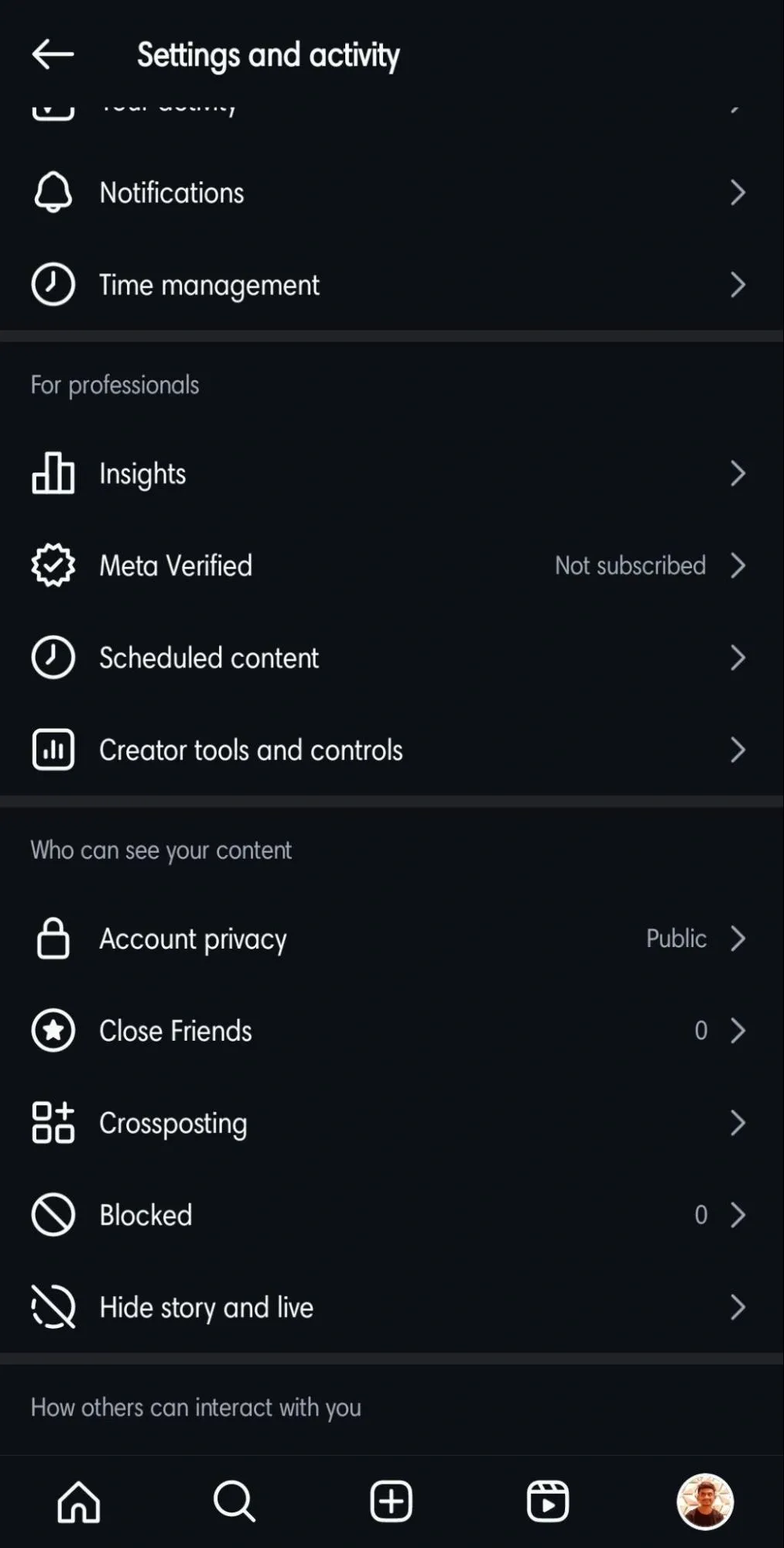
Implications:
- Hidden, Not Deleted: The post is removed from public view on your profile grid, but it's not permanently deleted. All the likes and comments it received are preserved along with the post itself.
- Private Access: Only you can see your archived posts. You can access them by going to your Profile > Hamburger Menu > Archive. You might see a dropdown at the top to switch between Stories Archive and Posts Archive.
- Restorable: You can easily restore an archived post back to its original spot on your profile grid whenever you want. Just go to your Posts Archive, tap the post, tap the three dots, and select Show on Profile.
Considerations for Influencers:
- Curating Your Feed Aesthetic: Is an old post messing with your carefully crafted grid aesthetic? Archive it! Want to temporarily remove posts that don't fit your current theme or brand image? Archive! It helps maintain a polished look without losing the content forever.
- Removing Outdated Information: Perfect for archiving posts about past promotions, limited-time offers, giveaways that have ended, or event announcements that are no longer relevant. Example: A food influencer archives a post about a restaurant collaboration menu after the promotion period ends.
- Seasonal Content Management: Archive festive posts (like Diwali or Christmas content) after the season is over and potentially bring them back next year.
- Taking a Content Break or Re-evaluating: If you're unsure about a post or want to take a break from certain content themes, archiving lets you pause without permanent deletion. You can revisit and decide later.
- Not Follower-Specific: Remember, archiving hides the post from everyone, not just specific followers. It doesn't help if you want some people to see it and others not.
- When to Use It: Archiving is your go-to for temporary removal, feed cleanup, managing time-sensitive content, or simply taking a post out of the spotlight without losing it. It’s a content management tool, not a selective visibility tool.
E) Blocking Users
This is the nuclear option, the firmest boundary you can set on Instagram. Blocking someone completely cuts off their access to you and your content on the platform.
How-To:
- Go to the profile of the user you want to block.
- Tap the three dots (...) in the top right corner of their profile.
- Select Block from the menu.
- Instagram will likely ask you to confirm and might give you the option to block just this account or any new accounts they may create. Choose the option that fits your situation. Tap Block.
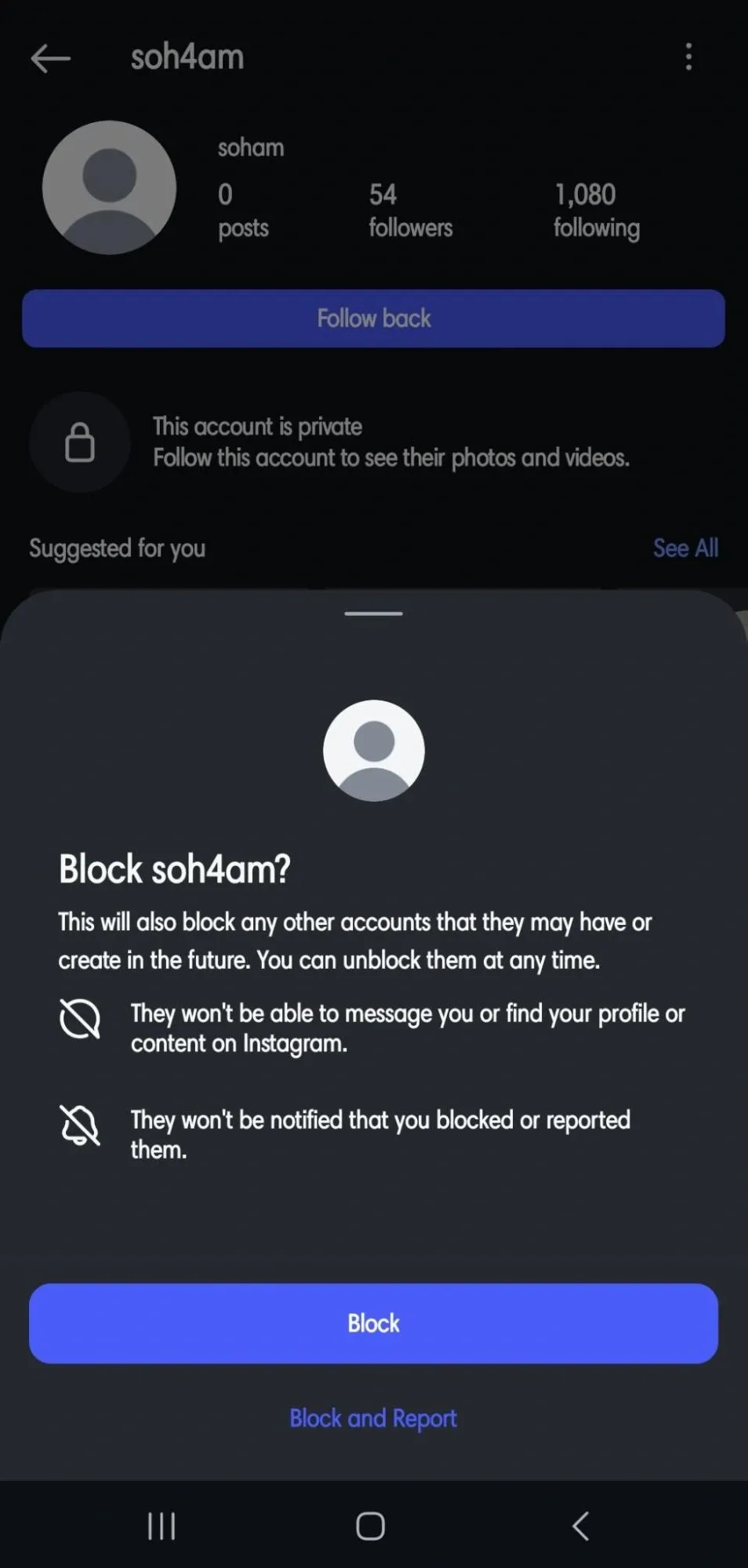
Implications:
- Complete Severance: The blocked user cannot find your profile, posts, or Stories on Instagram. If they try to search for you, it will appear as if your account doesn't exist.
- No Interaction: They cannot message you, comment on your (past or future) posts, tag you, or see your activity. Any previous likes or comments they left might disappear. Your DMs with them will also disappear from your inbox (and theirs).
- No Notification (Direct): Instagram does not send a notification saying "[Your Name] blocked you." However, they might figure it out if they try to search for your profile and can't find it, or if they notice they can no longer see your content or interact with you.
- Blocking Future Accounts: Instagram's option to block new accounts the person might create is helpful for persistent individuals.
Considerations for Influencers:
- Dealing with Harassment or Abuse: This is the primary use case. If someone is spamming you, harassing you, leaving hateful comments, or making you feel unsafe, blocking is often the necessary step to protect your peace and your community. Don't hesitate to use it for genuine safety concerns. Documenting harassment before blocking can sometimes be useful, just in case.
- Last Resort: Because it's such a definitive action, consider if 'Restrict' or 'Remove Follower' might suffice before blocking, especially if it's someone within your professional network or industry. Blocking can sometimes be perceived as aggressive.
- Potential Fallout: If you block a fellow influencer, a brand partner (perhaps after a bad experience), or even a very vocal follower, be aware there could be potential social or professional repercussions if they choose to talk about it publicly. Handle with discretion where possible.
- Maintaining Community Health: Sometimes blocking is necessary to remove toxic elements and maintain a positive environment for your other followers. Your well-being comes first.
- When to Use It: Blocking is for situations where lesser measures aren't enough. Use it decisively for harassment, spam, abuse, or any interaction that seriously undermines your safety, well-being, or the health of your online community. It's your strongest shield. 🛡️
Best Practices for Influencers
Managing who sees your content isn't just about clicking buttons; it's part of your overall strategy for building your brand and community responsibly. Here are some best practices to keep in mind:
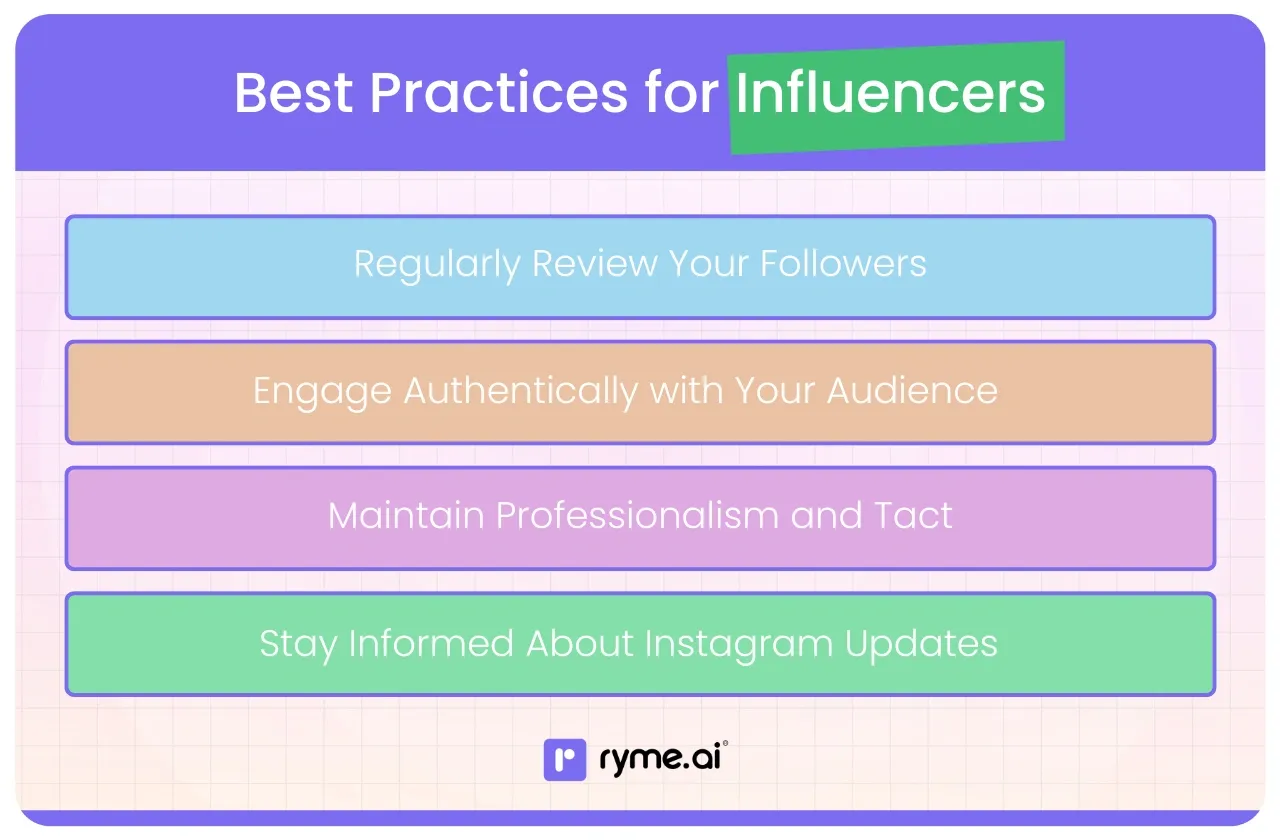
1) Regularly Review Your Followers:
Why: Your audience evolves, and so do your boundaries. Periodically checking your follower list helps ensure it aligns with your brand and comfort level.
How: Set aside time (maybe monthly or quarterly) to scroll through your followers. Look out for:
- Obvious bot accounts (no profile pic, random username, zero posts).
- Inactive accounts (though this is harder to judge).
- Users who consistently leave negative, off-topic, or spammy comments.
- Anyone whose presence makes you uncomfortable.
Action: Use the 'Remove Follower' function for general cleanup. Use 'Restrict' or 'Block' for more problematic accounts. Think of it as tending your digital garden – weed out what doesn't belong. 👍
2) Engage Authentically with Your Audience:
Why: Privacy tools are great, but building trust and community often means leaning in, not just shutting people out.
How:
- Leverage Close Friends: Use this feature strategically to share more personal or exclusive content. Ask for their opinions, run polls just for them, give them sneak peeks. This builds loyalty and makes your core audience feel valued.
- Respond Thoughtfully: Engage with comments and DMs (as much as is feasible and healthy for you). Show you're listening.
- Set Boundaries Clearly: You can state your communication preferences in your bio or through posts/Stories (e.g., "DM for collaborations only," or "Please keep comments respectful").
3) Maintain Professionalism and Tact:
Why: As an influencer, your online interactions reflect on your brand. Handling privacy actions thoughtfully matters.
How:
- Think Before Blocking: Especially if it involves someone in your industry, consider the potential impact. Is a 'Restrict' or 'Remove' (if private) a less confrontational option?
- Avoid Public Call-Outs: Don't announce publicly that you've removed or blocked someone (unless there's a serious safety reason involving your wider community). Handle it privately.
- Communicate Boundaries Respectfully: If you need to address problematic behaviour more directly (before blocking), do so calmly and clearly if possible, or simply use the tools without engaging further.
4) Stay Informed About Instagram Updates:
Why: Social media platforms change constantly! New features (or changes to existing ones) related to privacy and content control might roll out.
How:
- Follow Instagram's official accounts or blog (@creators is a good one).
- Pay attention to tech news sites or influencer marketing blogs that cover platform updates.
- Experiment with new features when they appear in your app (like Notes, Broadcast Channels, etc., which also impact visibility and interaction).
- Being aware of the latest tools ensures you're using the platform most effectively for your goals and comfort. For instance, recent discussions around algorithmic transparency might influence how you think about content visibility, even if direct controls aren't changing. Staying updated helps you adapt your strategy.
By integrating these practices, you move from just reacting to privacy concerns to proactively shaping your Instagram experience. It’s about being intentional with your presence.
Conclusion
So, can you hide specific Instagram feed posts from specific followers? The short answer is still no, not directly. But as we've seen, that doesn't mean you're powerless! You have a range of tools – making your account private, removing followers, using the Close Friends list for Stories, archiving posts, and blocking users – that allow you to control your visibility and interactions in different ways.
For you, as an influencer, navigating this is key. It's about finding that sweet spot between sharing your amazing content, growing your audience, collaborating with brands, and protecting your personal space and peace of mind. There's no single "right" answer; the best strategy depends on your niche, your goals, your content style, and your personal comfort levels.
Maybe you'll use a combination of these strategies: keeping your main account public but curating your followers actively, while using Close Friends for those more personal moments. Perhaps archiving helps you keep your feed fresh, while blocking is reserved for serious issues.
The most important thing is to be aware of your options and to use them intentionally. Regularly review your settings and your follower list. Stay updated on new features. And always prioritize your well-being. Your Instagram should be a space where you feel empowered to share and connect on your own terms.
You've got this! 💪
FAQs Related to Hiding Posts on Instagram
Let's tackle some common questions you might still have:
1) Can I hide posts from followers on Instagram?
You cannot hide individual feed posts from specific followers if they are already following you. If your account is public, all followers (and non-followers) can see your feed posts. If your account is private, all approved followers can see your feed posts.
However, you can control who sees your Stories by using the Close Friends list. Only people on this list will see Stories shared exclusively with them.
You can also prevent specific people from seeing any of your future content by removing them as a follower (if your account is private) or by blocking them.
2) How do I restrict someone from seeing my Instagram posts?
The "Restrict" feature doesn't stop someone from seeing your posts or Stories. It mainly limits their interactions with you (comments become hidden unless approved, DMs go to requests, activity status is hidden).
To actually stop someone from seeing your posts, your options are:
- Remove them as a follower: If your account is private, they lose all access. If public, they won't see your posts in their feed but could still visit your profile.
- Block them: This completely prevents them from finding or seeing your profile, posts, and Stories.
- Make your account private: This stops everyone who isn't an approved follower from seeing your content moving forward.
3) How do you know if someone hides their post from you on Instagram?
Since Instagram doesn't allow hiding feed posts from specific followers, this scenario doesn't quite happen. However, you might wonder if someone has limited your access in other ways:
- Close Friends Stories: You won't know if you're not on someone's Close Friends list. You simply won't see the Stories they share exclusively with that list (the ones with the green ring). You can't tell what you're missing.
- Removed as Follower (Private Account): If someone with a private account removes you, you'll suddenly be unable to see their posts or profile details. You'll see a "Follow" button instead of their content, and it might say "Requested" if you try to follow again.
- Blocked: If someone blocks you, their profile will become invisible to you. You won't be able to find them via search, and any previous DMs or tags might disappear. If you try to visit their profile via an old tag or comment, you might see a "User Not Found" or "No Posts Yet" message.
- Restricted: You generally cannot tell if someone has restricted you. That's the point of the feature – it's discreet. Comments appear normally to you, DMs send without error (they just land in the other person's requests), and you likely won't notice unless you somehow observe your comment isn't visible to mutual friends.
4) Can you hide Instagram posts without deleting them?
Yes! That's exactly what the Archive feature is for. Archiving removes a post from your profile grid so no one can see it anymore, but it saves the post (with its likes and comments) in a private section only you can access. You can restore it to your profile later if you wish. This hides the post from everyone without permanently deleting it.
